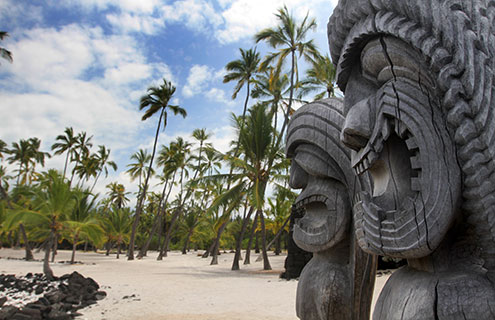It certainly hasn’t been plain sailing for Hawaii with this year alone seeing the domicile witness its fair share of highs and lows.
It certainly hasn’t been plain sailing for Hawaii with this year alone seeing the domicile witness its fair share of highs and lows.
In August, George Sumner resigned as Hawaii’s captive insurance administrator and deputy insurance commissioner, after more than three years in the role, which came as quite a shock to the state and the industry.
But with a temporary replacement found in Sanford Saito—an examiner with the captive unit in Hawaii—the domicile is starting to get back on track.
Less than a month after the news, the Hawaiian insurance division reported that Hawaii-domiciled captive insurance companies ended 2012 with just over $14 billion in assets.
Speaking at the time, Fay Okamoto, chair and director of the Hawaii Captive Insurance Council (HCIC), said: “What’s great about this business segment is that we’ve built an internationally competitive industry here in Hawaii that has grown organically, leverages local professional expertise and infrastructure, and attracts long-term business into the state.”
Chris Mertes, president and captive owner executive of the HCIC, added: “Hawaii is now facing meaningful competition from multiple domestic domiciles, and as a result, now more than ever, regulatory and legislative innovation and drive from the state are key elements that will assist the captive industry in maintaining its competitive position and grow.”
Saito attributes the growth in captive assets “to [Hawaii’s] business friendly environment and continued efforts in being accessible and listening to and working with owners, brokers and insurance managers to help solve their insurance needs”.
According to Gary Osborne, president of USA Risk Group, it all began for Hawaii in 1987 when the state passed its captive law. The state saw a surge in growth in the 1990s, which Osborne attributes to Hawaii being the only viable domestic alternative to Vermont. Hawaii was also “especially attractive” to west coast business.
“The arrival of South Carolina and then Arizona and Nevada saw the growth of Hawaii diminish somewhat in the 2000s and the domicile turned an eye towards Japan and Asian markets for growth,” says Osborne.
“However, many of the newer domiciles have had stability issues and the constant approach found in Hawaii has seen it reemerge in the last two or three years as a leading choice for formations. There are currently around 180 active captives in Hawaii.”
Osborne highlights Hawaii’s staying power as one of its main attractions, as a solid history of consistency is very important to clients setting up new business.
The state’s potentially favourable tax structure and increased flexibility on state meetings—due to a somewhat inconvenient time zone—also helps to promote the domicile.
“USA Risk Group [currently] has two active captives and an application in for a third. One is a single parent captive, one a risk retention group, and the application is for a cell company.”
“Due to its tax structure, Hawaii attracts fronted programmes as it does not impose a tax on premiums that are taxed elsewhere. It remains a strong choice for the Asian marketplace and has again risen as a strong choice for west coast-based companies.”
According to Saito, Hawaii’s consistent legal and regulatory approach to ongoing licensing, surveillance and development of the captive insurance industry creates a “predictable and efficient environment” for potential clients.
He adds: “We continually review our captive laws and regulations to foster a friendly business environment for captives while maintaining prudent regulatory practices.”
Saito touches upon regulation again, stressing that Hawaii takes pride in offering a stable and prudent domicile for captive insurance companies, paying particular attention to the staffing of the operation.
“We have had continuing and steady support from the governor and legislature for ensuring that we have expertise on staff in the captive branch to properly regulate and work with captive owners, and also keeping our laws and regulations up to date in this rapidly changing area.”
The Hawaiian Department of Commerce and Consumer Affairs has also recently established four new captive positions, to respond to the needs of captive owners, brokers, and managers. This puts the state on a par with Vermont in terms of captive division staff members.
After a quarter of a century in the business, Hawaii has proven itself to be a resilient domicile that has managed to overcome its potential pitfalls. But the state’s time zone is one particular hurdle that has threatened its success.
Osborne explains that “the Hawaii department of insurance has done much to combat this by being flexible on the definition of meetings in the domicile and in remaining competitive with its premium taxes but the emerging ‘home state’ phenomenon will not help Hawaii, just as it will not help Vermont or South Carolina.”
But despite some drawbacks, Osborne explains that USA Risk Group will continue to do business in Hawaii because of its consistent approach and longevity coupled with its improved flexibility, which make the state a considerable candidate for a domestic leaning captive.
“Their approach to the Asian market is also bearing fruit but that is a long road but one they are clearly willing to follow,” he adds.
On new markets, Saito explains that Hawaii has successfully implemented captives owned by non-US taxpayers from the Asian market.
He says: “Understanding their specific needs and insurance markets has enabled several prominent Japanese companies to domicile their captive in Hawaii.”
“The emerging economic power of the Asia Pacific market continues to be an area that Hawaii will be involved with. By establishing a captive in Hawaii, foreign owners will have indirect access to the US investment and capital markets.”
While the relatively untapped Asian market may not be booming, Saito is confident that Hawaii is the answer as it is ideally situated and has a long cultural history and social relationships with owners around the Pacific Rim.
“Owners find it is easier to do business and communicate with us in order to achieve their goals. We have always seen significant growth in the number of Japanese companies coming to the state of Hawaii.”





